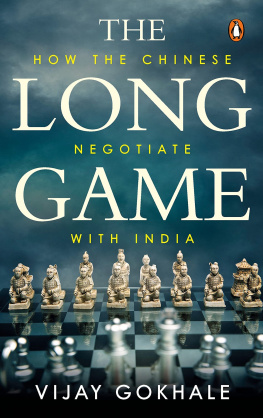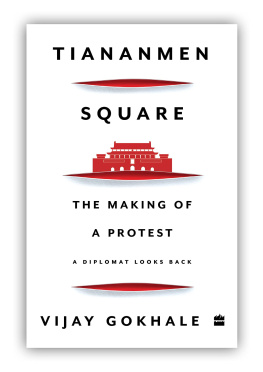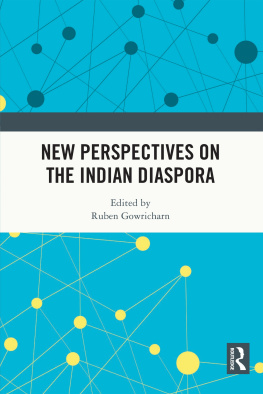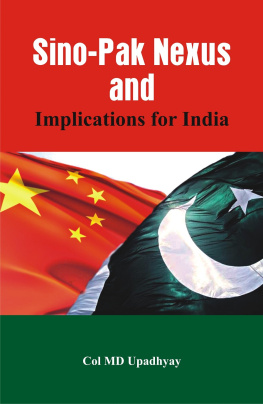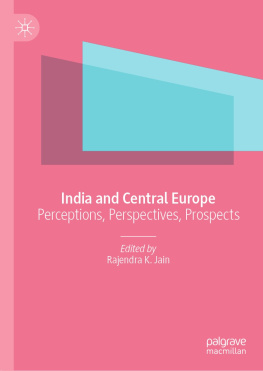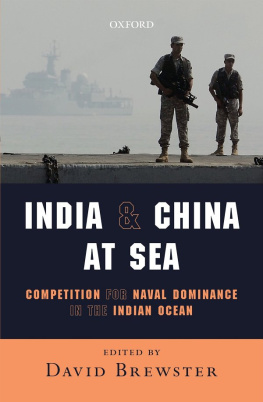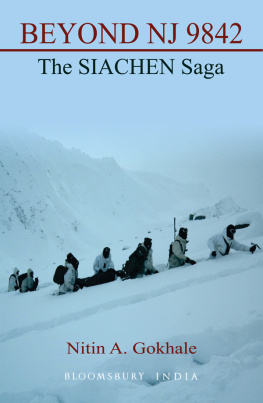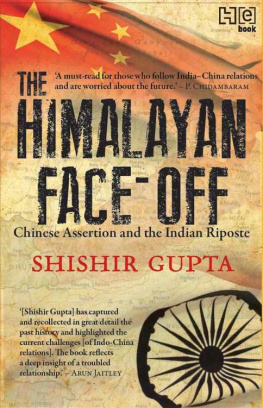| The Long Game: How the Chinese Negotiate With India |
| Vijay Gokhale |
| Penguin Random House India Private Limited (2021) |
|
| Tags: | Political Science, International Relations, Diplomacy, History, Asia, China, India & South Asia, General, Modern, 21st Century, Military, Wars & Conflicts (Other), 20th Century, Political Ideologies, Communism; Post-Communism & Socialism, Democracy, Security (National & International), Treaties, World, Asian |
| Political Sciencettt International Relationsttt Diplomacyttt Historyttt Asiattt Chinattt India & South Asiattt Generalttt Modernttt 21st Centuryttt Militaryttt Wars & Conflicts (Other)ttt 20th Centuryttt Political Ideologiesttt Communism; Post-Communism & Socialismttt Democracyttt Security (National & International)ttt Treatiesttt Worldttt Asianttt |
Essential reading for all those interested in how India will deal with its greatest strategic challenge, an increasingly powerful China
-SHIVSHANKAR MENON
Vijay Gokhale strips away the illusion that China ever shared convergent interests with India in Asia and globally. A disconcerting read, but indispensable.
-ASHLEY J. TELLIS
Indias relations with the Peoples Republic of China have captured the popular imagination ever since the 1950s but have rarely merited a detailed understanding of the issues.
Individual episodes tend to arouse lively debate, which often dissipates without a deeper exploration of the factors that shaped the outcomes. This book explores the dynamics of negotiation between the two countries, from the early years after Independence until the current times, through the prism of six historical and recent events in the India-China relationship.
The purpose is to identify the strategy, tactics and tools that China employs in its diplomatic negotiations with India, and the learnings for India from its past dealings with China that may prove helpful in future negotiations with the country.
Preface
A Beginning
China is our largest neighbour and the country with which we have had prolonged negotiations on a variety of issues since 1950. This book explores how China negotiated with India from the early years after Independence until the present, and what lessons India may draw from this about negotiating with the Chinese. It explores this through six important events in our bilateral relationship, which covers the period from 1949 to 2019. These are: (1) Recognition by the Government of India of the Peoples Republic of China on 30 December 1949; (2) the Agreement on Trade and Intercourse between the Tibet Region of China and India of 29 April 1954; (3) Indias nuclear tests in 1998; (4) Chinas formal recognition of Sikkim as a part of India on 11 April 2005; (5) the IndiaChina diplomatic negotiations on the 123 Nuclear Deal in 2008; and (6) the listing of Masood Azhar as a terrorist in the UNSC 1267 Sanctions List on 1 May 2019.
From the Indian perspective such narration might be useful in discerning how China negotiates and also how this might have changed as China accumulates greater power in the international system, as well as the instruments and means that China deploys in the pursuit of its goals.
Weve often heard claims being made about the long historical connection between India and China. However, relatively little is known about their diplomatic interaction in the pre-modern age, aside from travelogues of monk-scholars from China to India in the first millennium of the Common Era, and sporadic diplomatic expeditions from Indian kingdoms to the Tang and Song imperial courts from the seventh to the twelfth centuries. More recently, the Chinese government has been highlighting the naval expeditions of Zheng He, in the early fifteenth century, to the Indian Ocean, including the Kerala coast, in order to legitimize their growing presence west of the Malacca Strait. Evidence of an Indian (possibly Tamil) settlement in Quanzhou, in the Fujian province of modern China, also attests to trade links in the mid-second millennium of the Common Era. There is little recorded history of how the two major IndoPacific civilizations interacted in political and diplomatic terms. This might be explained by the absence of direct contact across a shared boundary because, despite Chinese claims to suzerainty over Tibet since the thirteenth century (Yuan dynasty), Tibet was mostly left to its own devices. Since Chinas business with India was mostly through maritime routes, the opportunity and necessity of political interaction was limited.
As the world became more interconnected in the twentieth century, the political distance between India and China began to shrink. The participation of Sikhs and other Indian troops in crushing the Boxer Rebellion were mere bystanders.
Therefore, in the true sense, Indias diplomatic activity with China in the modern age really started after 1947, and especially with the founding of the Peoples Republic of China in 1949. Despite the vast political experience of Indias first-generation leadership after Independence, they had had limited opportunities of handling diplomatic relations, and the civil service was trained in the British methods and mindsets of diplomacy. The Chinese Communists, on the other hand, had greater experience in dealing with foreign powers from the 1930s up to 1949, including with Stalins Soviet Union, which was their fraternal partner, the Americans and the British, who were their allies in the Second World War, as well as the Japanese. Moreover, China had a generally unbroken tradition of diplomacy because, unlike India, it was never directly governed by colonial powers and the Chinese Empire continued to have external relations. The leaderships of India and China were, thus, unevenly matched in terms of diplomatic experience when both became masters of their respective countries at the end of the 1940s.
In 1948, the Republic of China (the precursor to the current Communist government), then still based on the mainland, sent Dr Luo Jia-Lun as their ambassador to interact with the leaders of newly independent India. Within a short time, it became apparent to India that the Communists under Mao Zedong were overwhelming the Nationalist government led by Chiang Kai-shek. The Government of India was faced with the question of whether and when to recognize the new regime in Beijing. Within three months of Mao declaring from Tiananmen Square the establishment of the new Peoples Republic of China (PRC), India became one of the first countries to switch sides. The first chapter outlines the facts, how thinking evolved within the Government of India over the question of according diplomatic recognition to the new Chinese government, as well as how China approached this issue. Since this was the first diplomatic act between the two governments, it has seminal importance in terms of lessons for our diplomacy.

